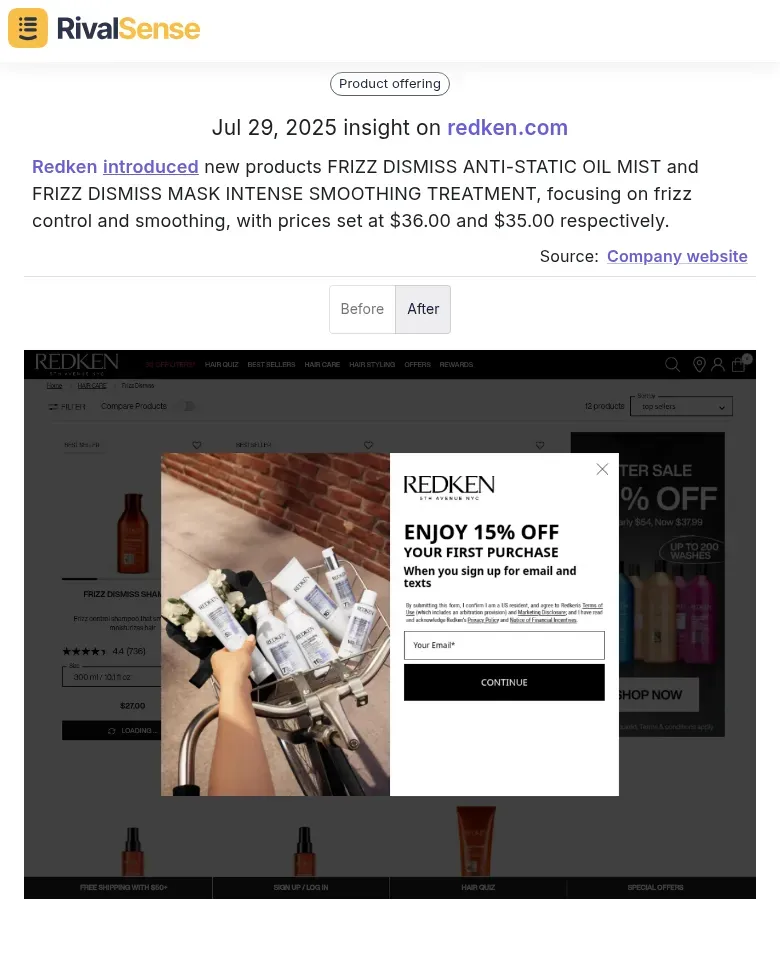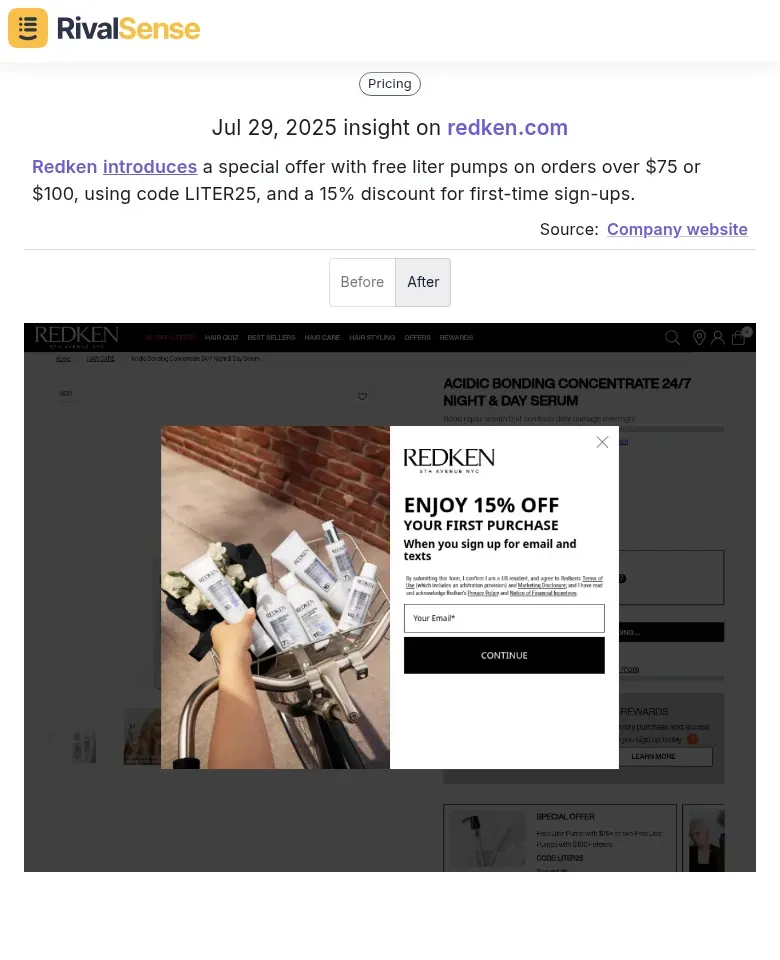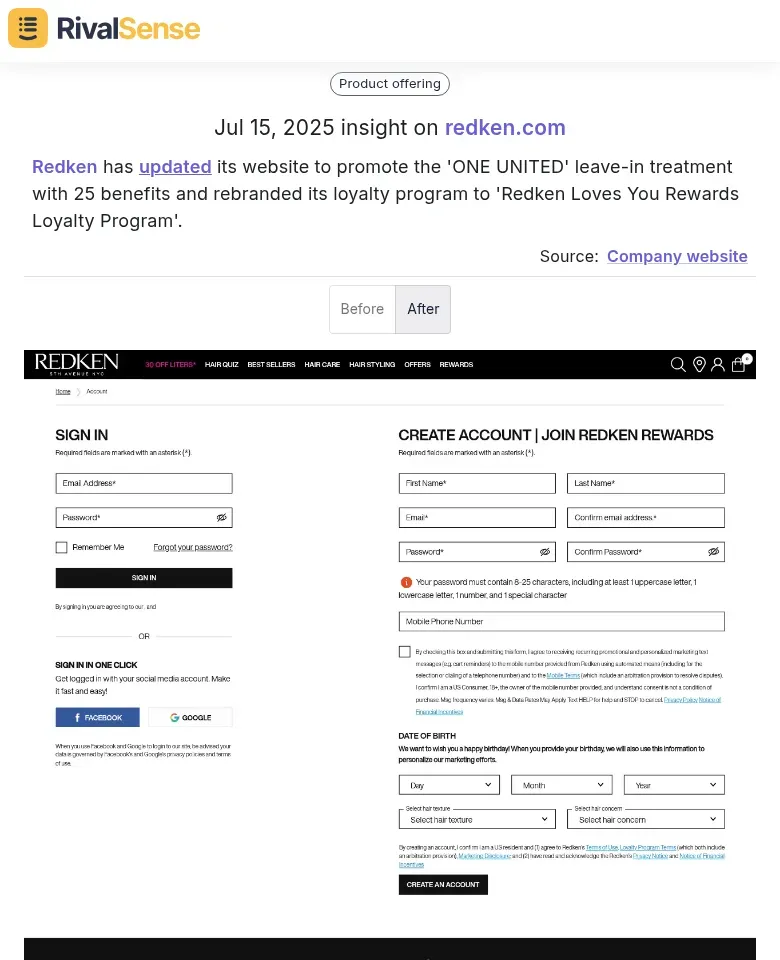The Ultimate Guide to Measuring Hair Care Partnership ROI: Strategies, Metrics & Competitive Insights
Measuring ROI in hair care partnerships is critical for strategic decision-making, enabling brands to allocate resources effectively and maximize returns. Without proper measurement, you risk investing in partnerships that don't deliver value or missing opportunities with high-performing collaborators. Common partnership types include influencer collaborations (e.g., sponsored content with beauty influencers), retail partnerships (placement in stores like Sephora or Ulta), and co-branding initiatives (joint product launches with complementary brands).
To set the foundation for ROI calculation, start by defining clear objectives and KPIs for each partnership. Track both quantitative metrics (sales, website traffic, social engagement) and qualitative benefits (brand awareness, customer loyalty). Establish a baseline before the partnership begins to measure incremental gains accurately. Use tools like Google Analytics and CRM systems to monitor performance throughout the campaign. This step-by-step approach ensures you can analyze what works, optimize future partnerships, and make data-driven decisions that drive growth in the competitive hair care market.
Key Metrics and KPIs for Hair Care Partnerships
To effectively measure hair care partnership ROI, focus on three core metric categories:
Financial Metrics: Track revenue attribution using unique discount codes (e.g., "PARTNER15") to isolate partnership-driven sales. Calculate Customer Acquisition Cost (CAC) by dividing total partnership spend by new customers acquired. Monitor Customer Lifetime Value (LTV) through repeat purchase patterns—top beauty loyalty programs like Sephora's see 80% of sales from members with 22% higher cross-sell revenue.
Engagement Metrics: Measure social media interactions (likes, shares, comments) and content reach using platform analytics. Track conversion rates specifically for hair care campaigns—industry averages are 2.5-3%, but aim for 15% through targeted influencer collaborations. Use UTM parameters to monitor click-through rates from partnership content.
Brand Impact Metrics: Conduct pre/post surveys to measure awareness lifts. Perform sentiment analysis on social mentions using tools like Brandwatch or Sprinklr. Enhance loyalty programs based on competitor insights: Ulta's tiered program drives 95% of sales from members, while The Body Shop's sustainability-focused rewards increased eco-engagement by 45%.
Practical Tip: Create a dashboard with weekly updates on these KPIs. Benchmark against industry standards—successful beauty partnerships typically achieve 4:1 ROI through combined financial and brand metrics.
Step-by-Step ROI Calculation Framework
Step 1: Define Partnership Goals & Business Alignment
Start by establishing clear, measurable objectives that align with your core business strategy. For hair care partnerships, this typically includes:
- Sales growth targets (e.g., 15% revenue increase from new market segments)
- Market expansion goals (entering new geographic regions or demographic segments)
- Brand perception metrics (social sentiment analysis, brand recall studies)
Practical Tip: Create a partnership scorecard with weighted KPIs that reflect your strategic priorities.
Step 2: Data Collection & Attribution
Implement robust tracking mechanisms to capture partnership performance:
- Use unique tracking codes (UTM parameters, promo codes) for each partnership channel
- Integrate CRM systems to track customer journeys from first touch to conversion
- Employ multi-touch attribution models (time-decay, position-based) to fairly distribute credit across touchpoints
Checklist: Ensure tracking covers both online (website conversions, social engagement) and offline (in-store promotions, event attendance) activities.
Step 3: ROI Calculation with Comprehensive Metrics
Apply the standard ROI formula: (Revenue - Investment) / Investment, but enhance it with:
- Tangible benefits: Direct revenue, cost savings, customer acquisition numbers
- Intangible benefits: Brand equity improvements, customer loyalty metrics, market intelligence value
Example Calculation: If a partnership generates $50,000 revenue with $20,000 investment, plus $5,000 in brand value uplift: ROI = (($50,000 + $5,000) - $20,000) / $20,000 = 175%
Pro Tip: Create a standardized ROI dashboard that automatically updates with real-time data from your tracking systems.
How Competitive Intelligence Enhances Partnership Strategy
Monitoring competitor activities provides invaluable context for your partnership decisions. When you understand what rival brands are launching and how they're positioning themselves, you can identify market gaps and opportunities for differentiation.
For example, tracking competitor product launches helps you time your own partnerships more strategically. If you see a competitor focusing on frizz-control solutions, you might accelerate your own partnerships in that category or pivot to address underserved needs like color protection or scalp health.

Example: Redken's recent launch of FRIZZ DISMISS products shows their focus on anti-frizz solutions—valuable intelligence for timing your own smoothing product partnerships.
Leveraging Competitor Insights for Partnership Success
Leveraging competitor insights transforms hair care partnerships from guesswork to strategic advantage. Analyze top beauty loyalty programs like Sephora's tiered Beauty Insider (driving 80% of sales) and Ulta's Ultimate Rewards (95% member-driven revenue) to benchmark your approach.
Product Alignment Strategy:
- Map competitor frizz-control innovations against partner capabilities
- Implement co-development frameworks mirroring MAC's exclusive product previews
- Use competitive intelligence tools to track 3+ competitor launches monthly for timing optimization
Promotional Optimization Checklist:
✓ Tier discounts: Bronze (5%), Silver (10%), Gold (15%) based on partner performance
✓ Loyalty incentives: Birthday gifts (like Sephora) + recycling rewards (Body Shop model)
✓ Real-time competitive pricing alerts to stay 5-10% more aggressive

Example: Redken's promotional strategy with free liter pumps and first-time discounts provides insights into effective incentive structures—understanding these tactics helps optimize your own partnership terms.
Digital Enhancement Steps:
- Website partnership hubs with exclusive content (model Lancôme's personalized portals)
- Loyalty program rebrands incorporating sustainability messaging (align with 2024 green beauty trends)
- Omnichannel tracking: Monitor competitor social engagement rates and beat by 15%
Pro Tip: Set up competitive alerts for competitor partnership announcements - respond within 48 hours with enhanced offers.
Tools and Technologies for Effective Measurement
To effectively measure hair care partnership ROI, implement a comprehensive tech stack. Start with Partner Relationship Management (PRM) tools like PartnerStack or Allbound for automated tracking, deal registration, and performance reporting. These platforms streamline partner onboarding and provide real-time insights into partnership performance.
Utilize analytics platforms strategically: Set up Google Analytics 4 with custom reports to track social media traffic, conversions, and engagement rates. Create custom dashboards in tools like DashThis for real-time monitoring of key metrics. Track UTM parameters for campaign-specific ROI measurement.
Integrate CRM systems like Salesforce or HubSpot to ensure seamless data flow between sales, marketing, and partnership activities. Implement automated workflows that sync partner-generated leads with your sales pipeline. Use CRM integration tools to maintain data consistency across all departments.

Example: Redken's website updates and loyalty program rebrand demonstrate how digital enhancements can drive engagement—tracking these changes helps optimize your own digital partnership assets.
Practical checklist:
- Define clear tracking parameters in your PRM
- Set up GA4 custom reports for social media ROI
- Establish CRM integration protocols
- Create real-time dashboards for executive visibility
- Implement automated reporting schedules
Best Practices and Continuous Improvement
To maximize hair care partnership ROI, implement quarterly review cycles using a standardized scorecard. Track key metrics: revenue contribution (sourced vs. influenced), engagement rates (portal logins, training completion), and partner health scores (NPS, support resolution times). Compare performance against direct channels—win rates, ACV, and sales cycle length—to identify optimization opportunities.
Establish bi-weekly feedback loops with partners through shared Slack channels or dedicated meetings. Use structured agendas: review joint goals, discuss market shifts (e.g., rising demand for clean beauty or hair loss solutions), and co-create action plans. Document insights in a shared dashboard for transparency.
Stay agile by monitoring competitor moves: if rivals launch refillable packaging partnerships, pilot similar sustainability initiatives. Adapt to consumer trends—like the 47% YoY growth in packaging discussions—by testing ergonomic designs or co-developing scalp-friendly products. Regularly reassess partnership models; shift from fixed-fee to performance-based structures if ROI data supports it.
Ready to Transform Your Partnership Strategy?
Measuring partnership ROI requires not just the right framework but also real-time competitive intelligence. RivalSense tracks competitor product launches, pricing updates, promotional strategies, website changes, and loyalty program enhancements—delivering actionable insights in weekly reports.
Try RivalSense for free and get your first competitor report today to see how competitive intelligence can elevate your hair care partnership strategy: https://rivalsense.co/
📚 Read more
👉 Regulatory Competitor Monitoring: Your 2025 Cheat Sheet for Legal & Compliance Intelligence
👉 How to Turn Competitor Event Intelligence into Strategic Advantage
👉 How to Track Competitor Regulatory Compliance for Strategic Advantage in 2025
👉 Actionable Strategies for Healthcare Joint Venture Compliance: A Practical Guide
👉 How Sacombank's Digital Shift Forced Competitors to Innovate (And What You Can Learn)
